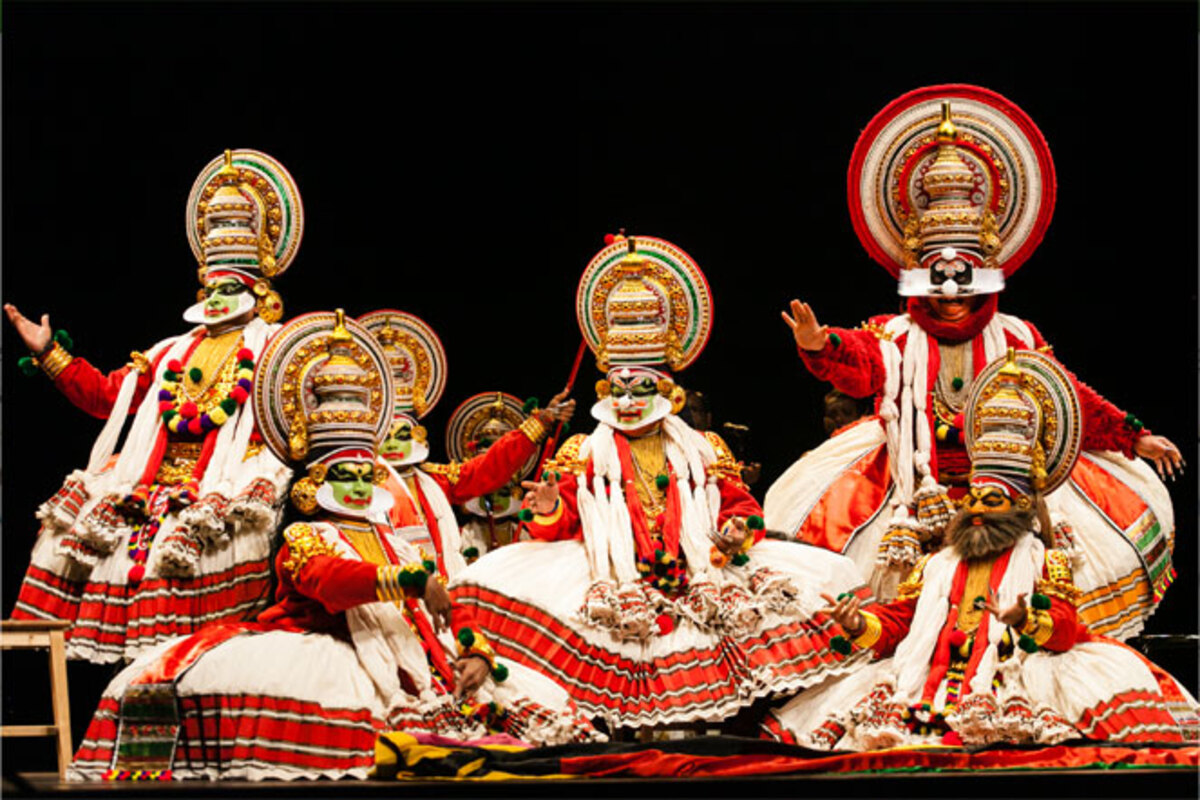PM Modi to interact with Pradhan Mantri Rashtriya Bal Puraskar awardees today
This year, 11 children from across the country, under different categories of Bal Shakti Puraskar, have been selected for PMRBP-2023.
Kathakali art form is often compared to Koodiyattam in terms of style as well as costume. However, the elaborate and uniquely decked style of the Kathakali costumes, as well as the local language, is better portrayed, used, and preferred by the local audiences.

Kathakali (photo: stock)
The culture of a place can be acknowledged from its art and dance forms. Dances are considered integral parts of the culture of any region. Kerala which is situated in the southern part of India and is popularly known as ‘God’s Own Country’ magnificently is famous for palm-lined beaches, its backwaters, its wildlife, cruises, and its several dance forms.
Among the many folk dances, some are native and have gained recognition only within the state whereas, some have gained popularity worldwide. Many of these dances are performed at the time of temple festivals and occasions.
These forms of dances are unique in their way of presentation with wonderful expressions, which are performed by the finest dancers. The performers are adorned with attractive costumes and ornaments that add charm to the dance.
Advertisement
Kerala has around 50 forms of dance. And among these one dance which is famous for describing the culture of Kerala is Kathakali.
Kathakali is a vivacious dance-drama, filled with attractive colors combined with the elegant motion of the body in synchronous with the music. Kathakali originated in the 17th century and is still popular and widely performed in various parts of the state.
The drama portrayed generally involves mythology. This drama depicted in dance is either adapted from The Mahabharata or The Ramayana or The Puranas. Kathakali is one of the most noteworthy dances as people recognize Kerala and its art and culture through this folk dance.
The costume is the most distinctive characteristic of Kathakali. The makeup is very elaborate and the costumes are very large and heavy.
There are several kinds of costumes. There are Sathwika (the hero), Kathi (the villain), Minukku (females), and Thatti. These basic divisions are further subdivided in a way that is very well known to Malayali (Keralite) audiences. Each character is instantly recognizable by their characteristic makeup and costume.
The makeup is very elaborate. It is so elaborate that it is more like a mask than makeup in the usual sense. The materials that comprise the makeup are all locally available. The white is made from rice flour, the red is made from Vermilion (a red earth such as cinnabar). The black is made from soot. The colors are not merely decorations but are also a means of portraying characters. For instance, red on the feet is used to symbolize the evil character and evil intent.
The music of Kathakali has some similarities to the larger body of South Indian classical music (Carnatic sangeet); however, the instrumentation is decidedly different. Its local color is strongly achieved by the use of instruments such as chenda, idakka, and shuddha madalam.
Previously this art form was popular for the signature style that it portrayed for centuries. But with the passing years, more themes, refined and polished gestures, drumming, and singing have added to the glamour of the dance. Besides, more colors and more artwork have been imprinted on the costumes of this art form, thus escalating the glamour quotient of these outfits.
More and different shades of make-up have been introduced with the gliding years that have enhanced the entire look of this art form. The U.S. has initiated a lot of innovations in terms of creating make-up replacement frames and pieces, which are generally used in this art form by the characters, along with accessories as well as costume replacements.
Crediting to the traditional essence this art form depicts through the medium of dance as well as its costumes, many countries across the globe have recognized and acclaimed this art form on a huge scale worldwide. The colorful makeup and costumes have enchanted people, as it echoes the heart of Kerala in its true words of ethnicity.
Kathakali art form is often compared to Koodiyattam in terms of style as well as costume. However, the elaborate and uniquely decked style of the Kathakali costumes, as well as the local language, is better portrayed, used, and preferred by the local audiences.
Kathakali dance forms, as well as their costumes, have been radiantly depicted in Malayalam movies like Rangam, Vanaprastham, Marattam, Parinayam, and many more.
Advertisement